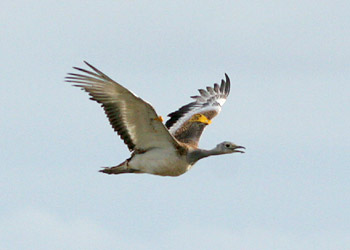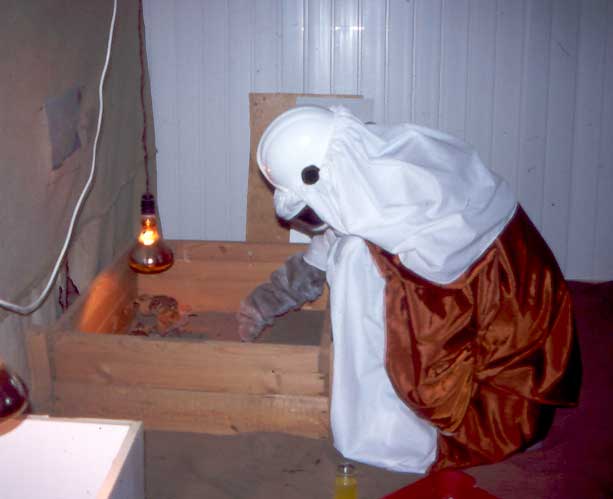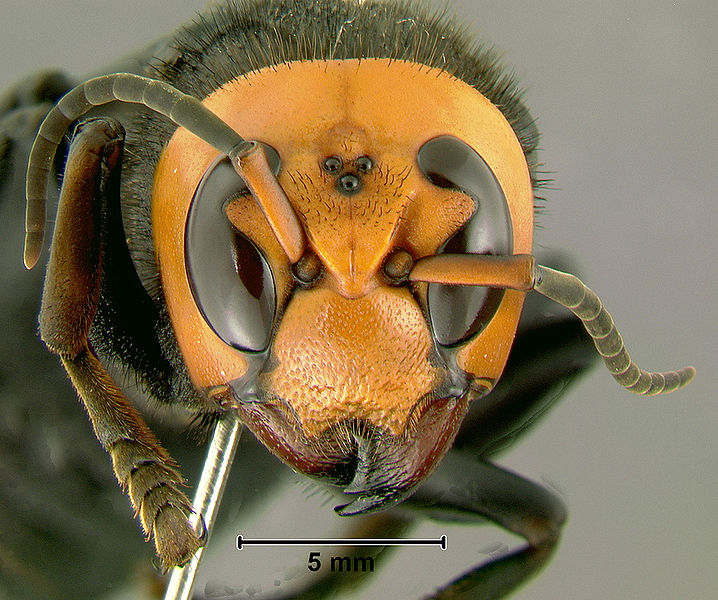The lucky bustards
- Complaining about the Mainland - 17th August, 2024
- New island designation – is it just greenwash? - 26th April, 2024
- Police and Crime Commissioners – a solution or a problem? - 21st April, 2024
Way back in 2005 The Ranger blogged about an unexpected sighting of a flying Great Bustard (Otis tarda)seen over the Channel. It was one of what was then a few reintroduced birds which were at a secret location on Salisbury Plain.

Since then the Great Bustards have been doing pretty well – with quite a bit of help. In 2007 wild Great Bustards bred in England for the first time since 1832. Now they have a great website, too, to explain a bit more about the world’s largest flying birds and the ongoing project to reintroduce them to Salisbury Plain. So, just how big is a Great Bustard?

Absolutely massive, apparently. The male Bustard can weigh up over 20kg, and have a wingspan of some 250cm. Interestingly, the female is a great deal smaller – weighing only a maximum of 5kg. The Great Bustard Group website crows:
There is a marked difference in size between male and females, termed sexual size dimorphism. Great Bustards actually exhibit the largest sexual size dimorphism of any bird species and even most other vertebrates! Female Great Bustards can be as much as 50% smaller than males.
Bustards live naturally in various locations across temperate Europe and Asia, and the introduced bustards in England come from a stable population in the Trans-Volga region of southern Russia. The area is largely arable, and the bustards like to build their nests on fields which are ready for ploughing – leading to a good supply of abandoned bustard eggs in Russia. The eggs are hatched and the young birds raised in a field station in Russia before being shipped to the UK. Between six and 32 birds from this source have been introduced in England between late August and mid October every year since 2004. Project staff wear special dehumanisation suits to avoid the chicks imprinting on humans and associating them with food. No, seriously, they do. Look.

Anyway, Great Bustards, as the name suggests, are great, and they’ve also got a first class website – even, appropriately enough, a twitter account. Go and check it out, and enjoy learning about the work of the Great Bustard group and all the partners working for this impressive animal’s future.


I loved the dehumanisation suit picture. It reminded me of a lot of church nativity plays I’ve seem over the years. Gold, frankinsense and byrrd, anyone?
This is great news. The best news of the day. Thank you for giving this bird’s plight good publicity.
Bill;www.wildramblings.com
When I went to Hungary one of the things I wanted to see were the Great Bustards. I had managed to book a guide who turned out to be the EU Great Bustard Officer and we had an amazing safai acreoss the plains of the Danube seeing an array of birds including a large colony of red footed falcons, marsh harriers, as well as the Great Bustards (not a great view but we were there at the wrong time of year!).
Anyway I asked our guide what he thought of the reintroduction in Britain. He said he had visted it but thought that Sailsbury Plain was a bit small!
If I had to answer a pub quiz question I would have said Great Bustards were extinct. Thanks for correcting me and good luck to them!